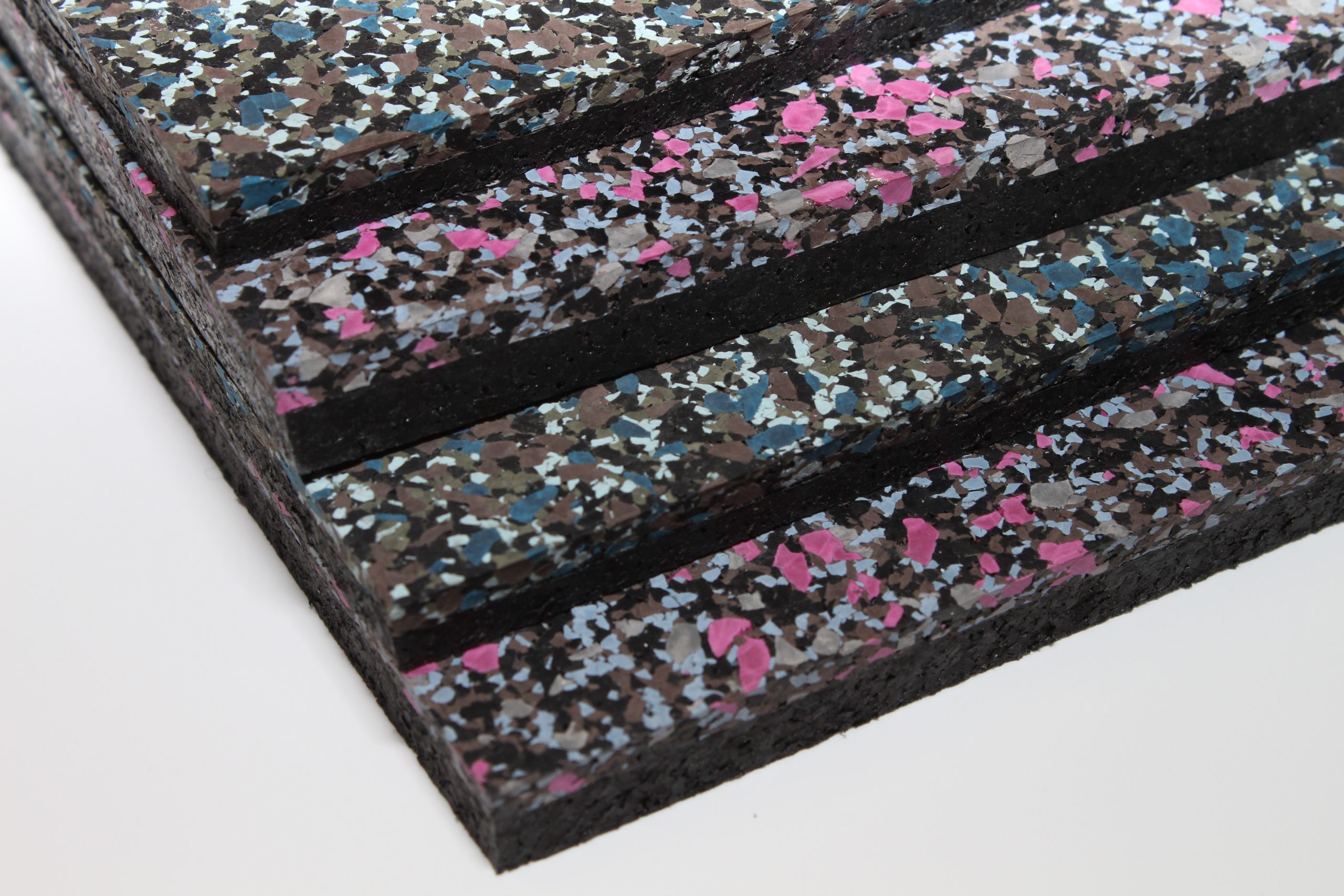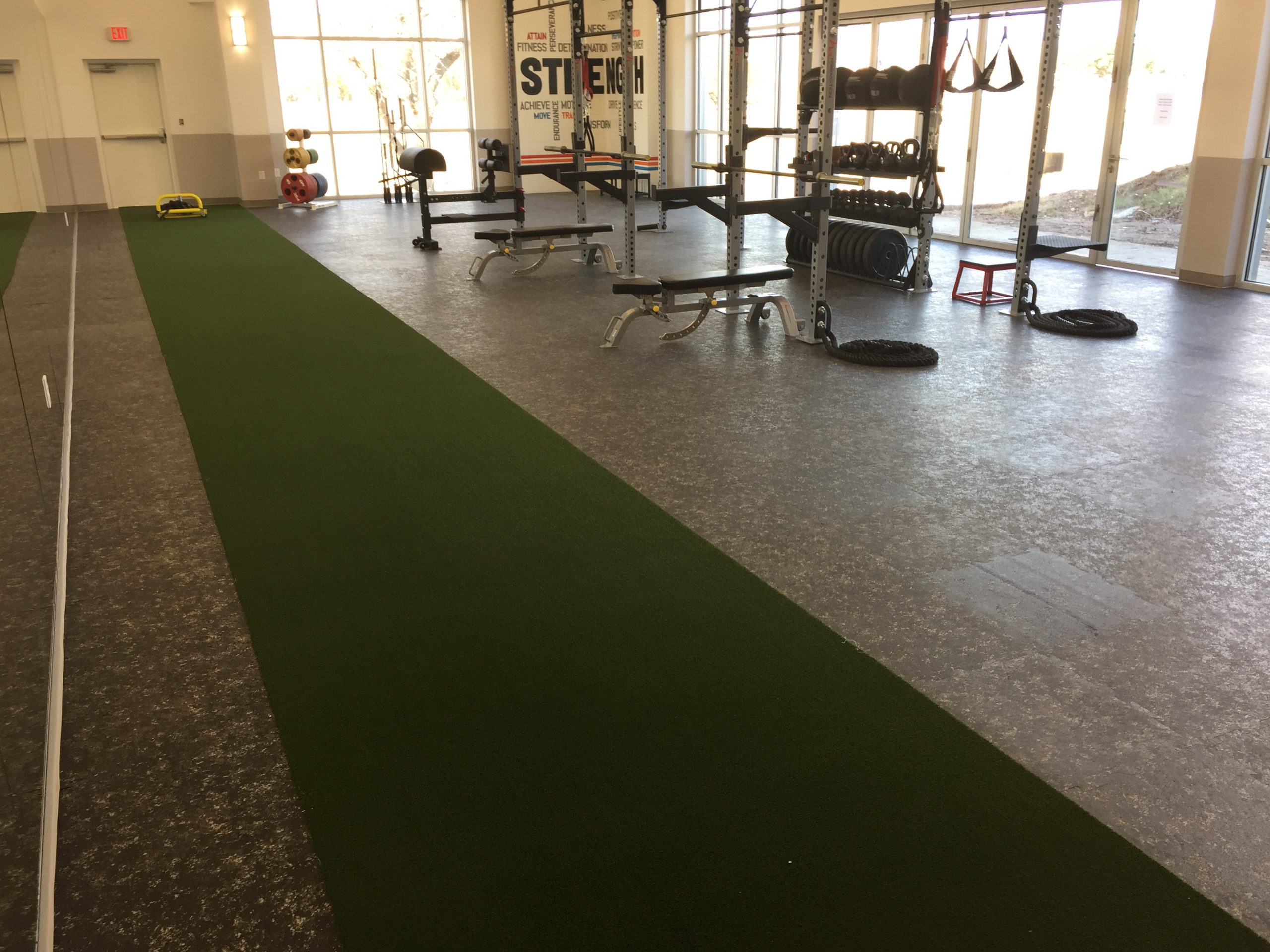Surface Guide
Need some inspiration? Find a model for your next gym, playground, or athletic facility here.
Rubber Flooring
Rubber flooring is a popular for indoor fitness facilities, home gyms, commercial gyms, and even playgrounds. The natural resilience of rubber means it provides shock absorption and energy restitution. Shock absorption is the property that provides comfort and reduces stress injuries like shin splints (medial tibial stress syndrome) compared to harder surfaces. Energy restitution is a property that returns energy given to the surface. For example, bouncing a ball on a floor with high energy restitution with return to a greater height that it would if bounced on a surface with less energy restitution. These properties of rubber flooring make it a natural choice as an exercise floor.
Another reason rubber flooring is a good surface for physical activity is the variety of applications it fits. You can find rubber floors in commercial gyms, home gyms, indoor playgrounds, and outdoor playgrounds. You will also find rubber floors in the form of rolls, straight edge tiles, interlocking tiles. Interlocking tiles can be a DIY project, but rolls and straight edge tiles typically require adhesive and installation.
Rubber flooring come in a variety of colors. Most rubber flooring is made primarily from recycled tires, which are black, but EPDM color chips are added as the floor in manufactured. The higher percentage of EPDM chips, the more color is visible, but the percentage of recycled material is typically less.


Vinyl Sports Flooring
Vinyl sports floors have become the “go to” sports floor for multipurpose facilities, such as schools, recreation centers, and fitness facilities. It is important to remember that a vinyl sports floor is not the same as VCT (Vinyl Composite Tile). VCT has nearly zero shock absorption and it is not designed for sports. On the other hand, a sports floor is a heterogeneous vinyl that is made of different layers. There is a surface layer, that establishes the right amount surface friction and protects the floor. Underneath the surface is a wear layer, a woven or non woven mesh, and then a foam cushion that provides shock absorption properties.
For its relatively low profile height, sports vinyl typically has a high shock absorption value. That makes it an excellent surface for physical activity, but vinyl sports flooring stands out for other qualities too. For instance, most vinyl sports floors have wood grain patterns that give the surface a natural appearance, but unlike wood, it is less reactive to humidity changes and it is much easier to maintain. There are also fewer profile considerations in designing your facility, since shock absorbing wood systems can be two or three inches thick. If you are designing a space, such as a yoga studio, where you are trying to balance aesthetics with a reasonable maintenance routine, sports vinyl is a perfect option.
Turf
Artificial turf has revolutionized team sports and personal fitness alike. A key reason why turf has come to be so popular is consistency. Unlike grass, turf is level in all places on the field. With that, athletes can be sure of their footing and they are less likely to become injured on uneven ground.
The prevalence of turf on competitive fields has led to artificial turf installations in fitness centers. Since competition happens on turf, it helps to train on turf when possible. Sled workouts and agility training on a surface that mimics the field do a better job of preparing athletes for the game. With the feeling and responsiveness of turf, practiced motions translate to the field more easily than those rehearsed on another surface.
There are significant material differences in turf. The key factors that distinguish one turf from another are: fiber type (polypropylene, nylon, or mixed), pile height (the length of the “grass” on top of the backing, and face weight (the density of the pile). Another basic difference is infill. Infill is typically made of crumb rubber or sometimes cork, which fills the space between the strands of grass. Some types of turf do not have infill.


Portable Sports Flooring
Portable flooring comes with a completely different set of expectations than permanent floor installations. When forced to consider installation time and storage, it changes what we consider a good floor. To clear such a high bar, manufacturers have tried all types of materials, including hardwoods, plastic tiles, cushioned vinyl, turf, and other materials. That has led to a wide range of performance characteristics. For instance, portable hardwood courts might be heavy and cumbersome to store, but have the look of a professional basketball court when installed. Plastic tiles might be easier to store, but offer less shock absorption. Ultimately, the right portable floor is the one that meets your specific performance expectations.
Sign up for our newsletter.
Want to get the latest news, updates, and offers on sports surfaces? Add your name and e-mail address to our newsletter.
